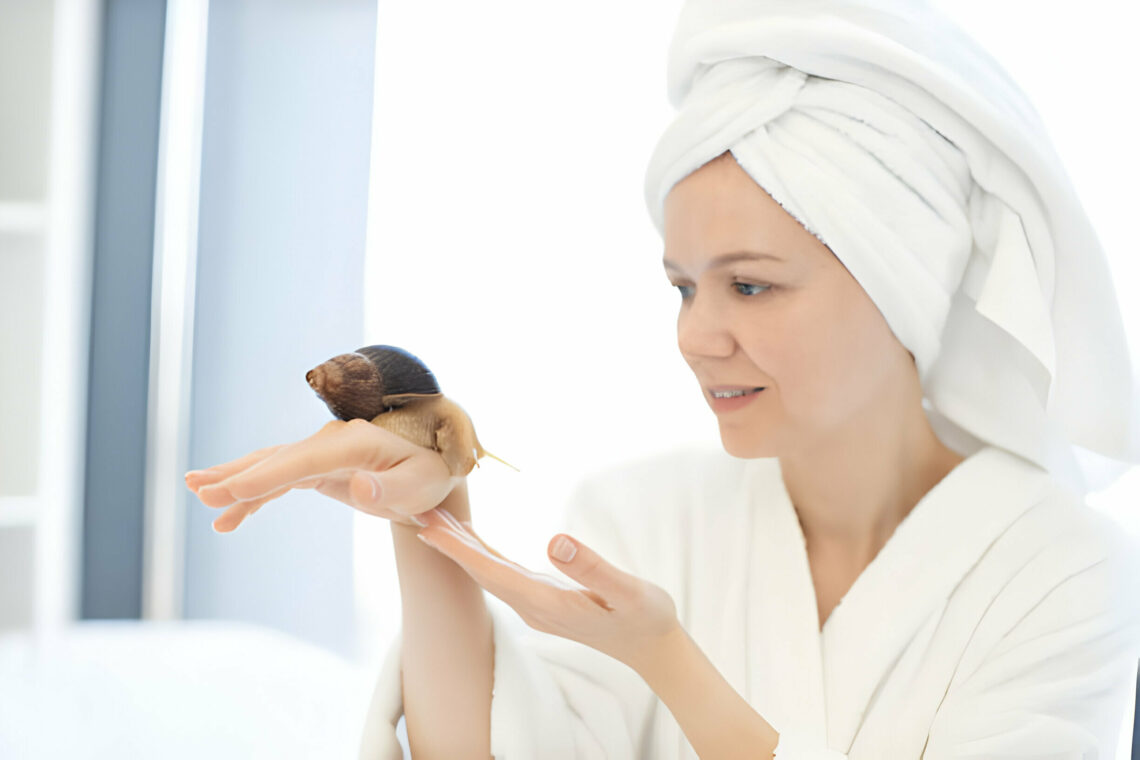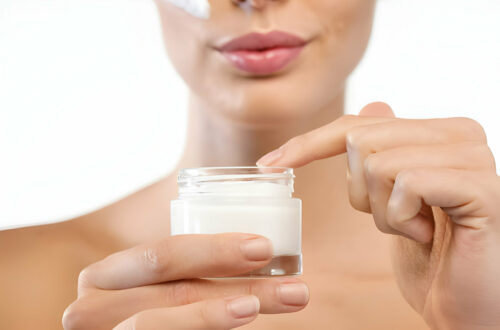Everyone desires clear and healthy skin, even if it means applying the slimy substance produced by snails. That’s right, the latest unconventional ingredient in skincare is the gooey substance left behind as these slow creatures move. When learning how to build a skin care routine, incorporating innovative ingredients like snail mucin can make a difference
This substance is technically called snail mucin. It has been popular in South Korea for a long time, a country known for its advanced and innovative approach to beauty. This trend has now spread to other parts of the world, including the United States.
According to Georgia Smith, a cosmetic chemist and the founder of Skin Sister based in Sydney, “It’s currently a significant trend, and for valid reasons.”
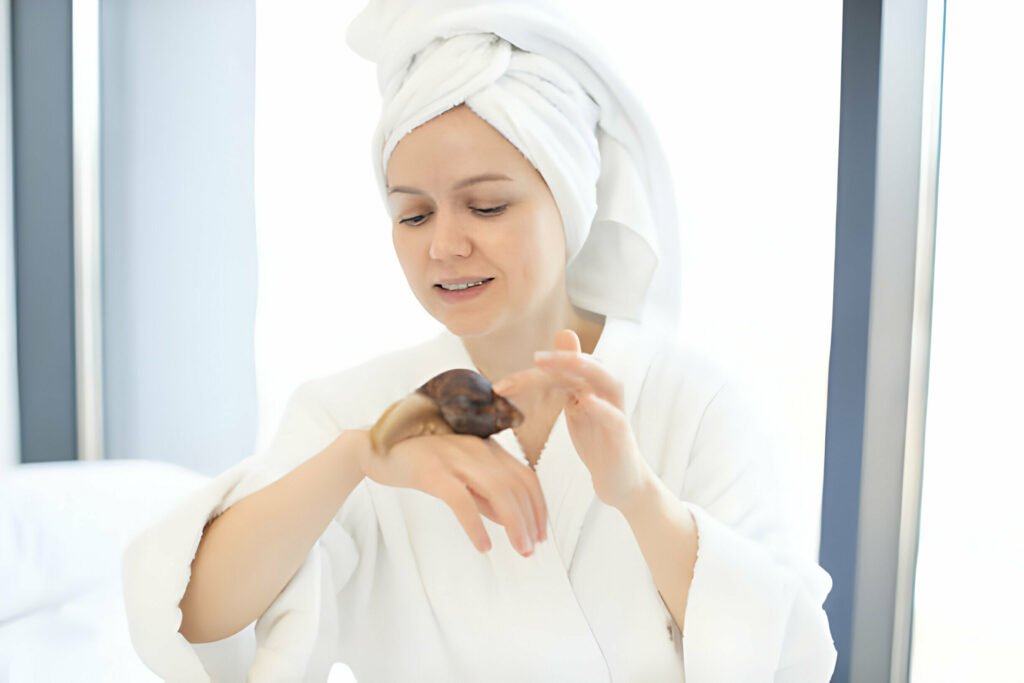
In the following sections, you’ll find out more about what snail mucin is, how it’s applied, and how you can add it to your skincare routine (if the idea doesn’t gross you out too much).
What Is Snail Mucin? Snail mucin is basically what snails secrete. Sometimes, you might see it listed as “snail secretion filtrate” (SSF) on skincare product labels.
In simple terms, snail mucin is a mix of different things like proteins, enzymes, hyaluronic acid, copper peptides, antimicrobial peptides, iron, zinc, and proteoglycans, as explained by Smith. You might recognize some of these if you know about skincare.
But how did people even start thinking snail goo is good for the skin? Well, back in the 1980s, workers on a snail farm in Chile noticed their hands got soft. They thought it was because of the snails.
Nowadays, it’s a big deal. A report from October 2021 in Frontiers in Bioengineering and Biotechnology predicts that the snail mucin skincare market could be worth $770 million by 2025. To collect snail slime, they usually keep snails in a dark place and let them move on to something that can catch their slime, like glass or mesh, as an article in Racked explains.
Possible Benefits of Snail Mucin
Snail mucin is a relatively new ingredient in skincare and not widely studied like many other well-known skincare ingredients.
However, it might offer some unique advantages for the skin. According to Smith, “It’s loaded with good things that your skin will like.”
Hydrates the Skin Products with snail mucin could be beneficial for individuals with dry skin. For those looking to understand how to hydrate skin, Dr. Anna Chacon, a certified dermatologist from Miami, explains, “It has moisturizing properties that help strengthen the skin barrier and lock in moisture.”
This is because of the hyaluronic acid it contains, which instantly adds moisture to the skin, notes Smith. Even though there’s limited research on snail mucin, the moisturizing effects of hyaluronic acid are well-established. A study from June 2021 in Dermatology and Therapy found that hyaluronic acid serum increased skin hydration by 134 percent right after application and improved skin fullness, smoothness, and the appearance of fine lines and wrinkles.

Fighting Early Skin Aging Smith explains that snail mucin encourages collagen production. Some people have shared stories that snail mucin might help counteract certain signs of skin aging. This could be great news for maintaining skin health and achieving a more youthful appearance. A previous study found that using a serum containing 40 percent snail mucin for 12 weeks reduced the visibility of fine lines and wrinkles. However, this study was quite limited, involving only 25 women, so more research is necessary. For anti aging skin care, incorporating snail mucin could be beneficial, but it’s important to consider additional evidence and consult with experts.
This effect might be due to the presence of glycolic acid in snail mucin. Dr. Chacon explains, “Glycolic acid boosts the creation of collagen, which not only diminishes fine lines and wrinkles but also gives your skin a lovely, youthful radiance.”
Aiding in Wound Healing Snail mucin could be helpful if you have a scrape or cut. “Snail mucin is known for its healing properties, as it has been demonstrated to enhance wound healing and can improve the appearance of scars,” says Smith. It might also be useful for acne due to its antibacterial and anti-inflammatory qualities, notes Dr. Ahmed Chaudhry, a dermatologist and consultant with Scandinavian Biolabs based in Islamabad, Pakistan.
Protection Against Skin Cancer There’s initial research suggesting that snail mucin might have the potential to assist in treating skin cancer. A study published in May 2018 in Biomedicine & Pharmacotherapy proposes that snail mucin helped combat melanoma cells and could have applications against skin diseases. However, more rigorous research is required to confirm this.
Different Types of Snail Mucin Products As snail mucin has gained popularity, it’s been included in various product types. Here are the most common ones:
If you want a strong dose of snail mucin, look for it in a serum. Dr. Chacon suggests, “For an all-around anti-aging effect, choose a serum. They usually have a higher concentration of the ingredient.” When considering the order of skin care products, applying the serum after cleansing and before moisturizing ensures better absorption and effectiveness.
Snail Mucin Essence – An essence is a light, water-based product. According to Smith, it’s a great option if you’re new to skincare or if you want to try out the snail mucin trend gently.
Snail Mucin Cream – This ingredient is also added to moisturizers or creams. If you’re worried about wrinkles, opt for a thicker cream. Smith advises, “A thick cream ensures your skin gets the benefits of snail mucin and provides extra nourishment with added lipids.”
Possible Snail Mucin Side Effects – Snail mucin is generally well tolerated, and there are no reported negative side effects. However, it’s a good idea, especially if you have sensitive skin, to test the product on a small area before using it more widely. This helps ensure you won’t have an adverse reaction.
How Does Snail Mucin Interact with Other Ingredients? Since snail mucin is still relatively new, there isn’t much research available. As of now, there’s no evidence to suggest that snail mucin reacts negatively with other ingredients.
It’s worth noting that snail mucin is not suitable for vegans, considering its origin from snails.
Is Snail Mucin Safe to Use During Pregnancy?
Using snail mucin during pregnancy is safe, according to Chacon. You can include snail mucin products in your skincare routine without worries.
However, since snail mucin is a recent addition with limited research, it’s wise to consult your doctors before trying a new product while pregnant or nursing. For a pregnancy safe skin care routine, your dermatologist or obstetrician may offer different advice.
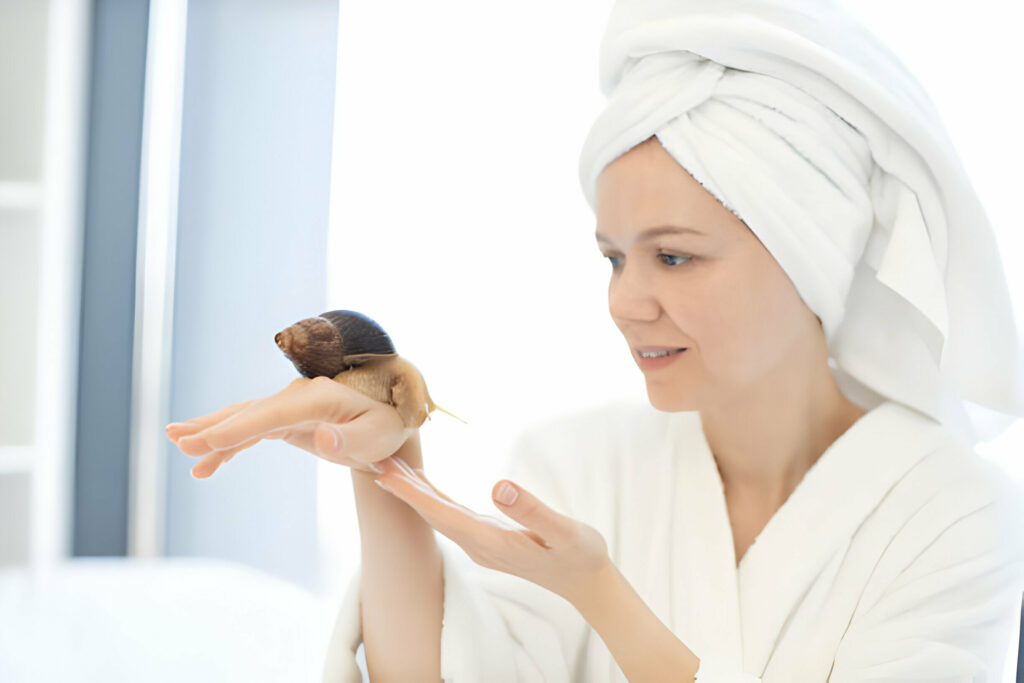
Can I Use Snail Mucin for Skin Conditions?
Even though there isn’t extensive research on snail mucin for alleviating skin conditions, some dermatologists suggest that it might help and carries a low risk of harm.
Smith explains, “A product with snail mucin could benefit those dealing with skin conditions like eczema, psoriasis, and rosacea. The ingredient is known for promoting healing and doesn’t contain irritants. In my professional opinion, it could be a valuable addition for individuals with these skin conditions.”
Chacon agrees, mentioning that its anti-inflammatory properties might reduce redness, hyperpigmentation, and eczema.
Alternatives to Snail Mucin Smith suggests that circa (CentellaAsiatica) is a comparable ingredient that might be present in other skincare products. She explains, “This active ingredient contains terpenoids, which research shows can aid wound healing when applied to the skin, just like snail mucin. Cica can also boost cell and collagen production, similar to what snail mucin does.”
In contrast to snail mucin, circa is rich in antioxidants that combat free radicals, protecting the skin. Smith concludes, “Overall, more research has been done on circa compared to snail mucin. So, if you’re unsure about using snail mucin, circa could be a great alternative.”
Using Snail Mucin: What to Look for in a Skincare Product When you’re shopping for a product with snail mucin, consider these tips:
Check the other ingredients. “While snail mucin is effective by itself, it works well with other active ingredients,” says Smith. Look for a snail mucin product that also contains retinol for anti-aging benefits or alpha hydroxy acids (AHAs) and beta hydroxy acids (BHAs) to help with breakouts and scars. Look at the concentration. “If you want a product with a higher snail mucin percentage, read the ingredient label,” Smith advises. “The higher the percentage, the earlier it will appear on the label.” Combine with vitamin C. Smith suggests adding a vitamin C serum to your routine for skin brightening and addressing pigmentation. “You won’t usually find a product with both vitamin C and snail mucin due to formulation challenges, but you can apply them one after the other,” she says. “Start with the snail mucin serum, let it absorb fully, and then apply the vitamin C serum.”
Incorporating Snail Mucin into Your Skincare Routine Using snail mucin is simple and, based on current research, seems safe for everyone. Dr. Chaudhry suggests starting slowly, like using it once every couple of days, to give your skin time to adjust and prevent any adverse reactions.
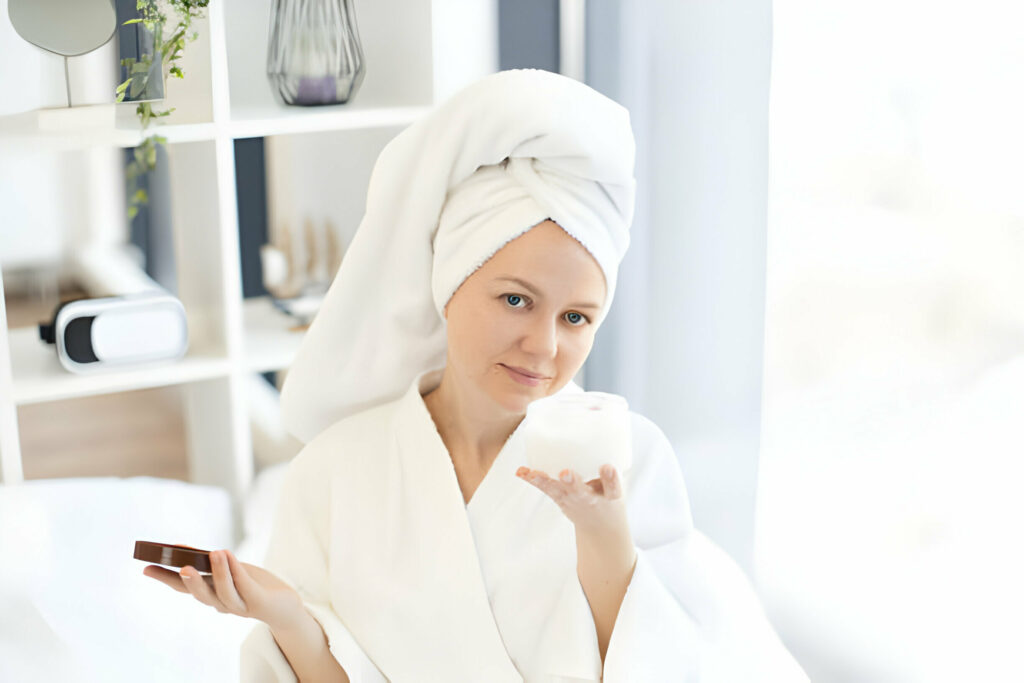
Ready to begin? Here are some tips to consider.
When to Include Snail Mucin in Your Routine Since snail mucin provides moisturizing benefits, using it at night is a good idea, according to Chacon. This way, your skin has the entire night to absorb it.
The timing in your routine depends on the product you’re using. Apply serums before creams, essences come next, and creams should be the final step.
How Often to Use Snail Mucin
There’s no set rule for how often to use snail mucin, and you don’t need to worry about using too much. Chaudhry explains, “However, you might need to adjust the frequency based on your skin type. For instance, people with dry skin might use snail mucin more often than those with oily skin.”
Can You Use Snail Mucin in the Morning and Night?
Chacon confirms that using snail mucin once or twice a day (both morning and night) is perfectly fine.
Dermatologist-Recommended Snail Mucin Products If you want to try a product with snail mucin, here are three options that experts recommend:
- COSRX Advanced Snail 96 Mucin Power Essence COSRX offers a range of snail mucin products, and Chaudhry highlights the essence. According to her, “This is a light but hydrating staple in Korean beauty. With 96 percent snail secretion filtrate, it brightens skin tone and smooths fine lines and wrinkles.”
- Mizon Snail Recovery Gel Cream Chacon suggests this product, which is safe for sensitive skin and doesn’t contain fragrance, artificial colors, or parabens. The key ingredient, snail secretion filtrate, is prominent in the formula, meaning a significant part of the product is made from snail slime.
- SeoulCeuticals Multi-Function All-in-One Anti-Aging Snail Repair Cream If you’re interested in exploring K-beauty, Chacon recommends this Korean brand. Their repair cream is loaded with a high concentration of 97.5 percent snail mucin.
In Summary “While more research is required to fully confirm the benefits of snail mucin, it’s undoubtedly a potent skincare ingredient,” Chaudhry states.
Currently, no adverse effects have been reported, only potential benefits like well-hydrated, youthful-looking skin. It might even assist in managing skin conditions and is considered safe for use during pregnancy. Nonetheless, if you have an underlying condition or are pregnant, it’s always wise to consult your doctor.
